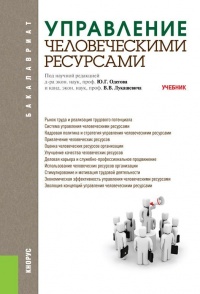Читать книгу - "Практика управления человеческими ресурсами - Майкл Армстронг"
Аннотация к книге "Практика управления человеческими ресурсами - Майкл Армстронг", которую можно читать онлайн бесплатно без регистрации
82. Bibbings R. Hearsay and heresy, The RoSPA Occupational Health and Safety Journal, July, pp. 51–52, 2003.
83. Billson I. How just-in-time training can support business-led competency development, Competency, Spring, pp. 21–24, 1998.
84. Birchall D., Lyons L. Creating Tomorrow’s Organisation, Pitman, London, 1995.
85. Blackburn R. M. and Mann R. The Working Class in the Labour Market, Macmillan, London, 1979.
86. Blackler F. Knowledge, knowledge work and experience Organization Studies, 16(6), pp. 16–36, 1995.
87. Blake P. The knowledge management explosion, Information Today, 15(1), pp. 12–13, 1988.
88. Blake R., Mouton J. The Managerial Grid, Gulf Publishing, Houston, 1964.
89. Blake R., Shepart H., Mouton J. Breakthrough in Organizational Development, Harvard Business Review, 42, pp. 237–58, 1964.
90. Blinkorn S., Johnson С. The insignificance of personality testing, Nature, 348, pp. 20–27, 1990.
91. Bloom M., Milkovich G. T. Rethinking international compensation, Compensation and Benefits Review, April, pp. 17–27, 1998.
92. Blyton P., Turnbull P. (eds) Reassessing Human Resource Management, Sage Publications, London, 1992.
93. Bontis N. There’s a price on your head: managing intellectual capital strategically, Business Quarterly, Summer, pp. 4–47, 1996.
94. Bontis N. Intellectual capital: an exploratory study that develops measures and models, Management Decision, 36(2), pp. 63–76, 1998.
95. Bontis N., Dragonetti N. C., Jacobsen К., Roos G. The knowledge toolbox: a review of the tools available to measure and manage intangible resources, European Management journal, 17(4), pp. 391–402, 1999.
96. Boudreau J. W. Utility analysis, in Human Resource Management: Evolving roles and responsibilities, ed. L Dyer, Bureau of National Affairs, Washington, DC, 1988.
97. Bower J. L. Business policy in the 1980s, Academy of Management Review, 7(4), pp. 630–38, 1988.
98. Bowey A. The Effects of Incentive Pay Systems, Department of Employment, Research Paper 36, DOE, London, 1982.
99. Bowles M. L., Coates G. Image and substance: the management of performance as rhetoric or reality?, Personnel Review, 22(2), pp. 3–21, 1993.
100. Boxall P. F. Strategic HRM: a beginning, a new theoretical direction, Human Resource Management Journal, 2(3), pp. 61–79, 1992.
101. Boxall P. F. The significance of human resource management: a reconsideration of the evidence, The International Journal of Human Resource Management, 4(3), pp. 645–65, 1993.
102. Boxall P. F. Placing HR strategy at the heart of the business, Personnel Management, July, pp. 32–35, 1994.
103. Boxall P. F. The strategic HRM debate and the resource-based view of the firm, Human Resource Management Journal, 6(3), pp. 59–75, 1996.
104. Boxall P. F. Human resource strategy and competitive advantage: a longitudinal study of engineering consultancies, Journal of Management Studies, 36(4), pp. 443–63, 1999.
105. Boxall P., Purcell J. Strategic Human Resource Management, Palgrave Macmillan, Basingstoke, 2003.
106. Boyatzis R. The Competent Manager, Wiley, New York, 1982.
107. Boyett J. H., Conn H. P. Maximum Performance Management, Glenbridge Publishing, Oxford, 1995.
108. Bradley P., Hendry С., Perkins P. Global or multi-local? The significance of international values in reward strategy, in International HRM: Contemporary issues in Europe, ed С Brewster and H Harris, Routledge, London, 1999.
109. Braverman H. Labour and Monopoly Capital, Monthly Review Press, New York, 1974.
110. Brayfield A. H., Crockett W. H. Employee attitudes and employee perfor mance, Psychological Bulletin, 52, pp. 346–424, 1955.
111. Brewster С. Developing a «European» model of human resource management, The International Journal of Human Resource Management, 4(4), pp. 765– 84, 1993.
112. Brewster С. Strategic Human Resource Management: the value of different paradigms, in Strategic Human Resource Management, ed R. S. Schuler and S. E. Jackson, Blackwell, Oxford, 1999.
113. Brewster С. European perspectives of human resource management, Human Resource Management Review, 14(4), pp. 365–82, 2004.
114. Brewster С., Holt Larsen H. Human resource management in Europe: evidence from ten countries, International Journal of Human Resource Management, 3(3), pp. 409–34, 1992.
115. Brewster С., Lloyd J. The changing face of union negotiations, Human Resources, Summer, pp. 148–52, 1994.
116. Brockbank W., Ulrich D., Beatty D. HR professional development: creating the future creators at the University of Michigan Business School, Human Resource Management, 38, Summer, pp. 111–17, 1999.
117. Brown D. Presentation to the Compensation Forum meeting, February, 1998.
118. Brown D. Reward Strategies, From Intent to Impact, CIPD, London, 2001.
119. Brown J. А. The Social Psychology of Industry, Penguin Books, Harmondsworth, 1954.
120. Brown D., Armstrong M. Terms of endearment, People Management, 11 September, pp. 36–38, 1997.
121. Brown D., Armstrong M. Paying for Contribution, Kogan Page, London, 1999.
122. Brumbach G. В. Some ideas, issues and predictions about performance management, Public Personnel Management, Winter, pp. 387–402, 1988.
123. Buchanan D. Job enrichment is dead: long live high performance work design!, Personnel Management, May, pp. 40–43, 1987.
124. BuchananD., Huczynski A. Organizational Behaviour, Prentice-Hall, Englewood Cliffs, NJ, 1985.
125. Bulla D. N., Scott P. M. Manpower requirements forecasting: a case example, in Human Resource Forecasting and Modelling, ed D. Ward T. P. Bechet and R. Tripp. The Human Resource Planning Society, New York, 1994.
126. Burdett J. О. What is empowerment anyway? Journal of European Industrial Training, 15(6), pp. 23–30, 1991.
127. Burgess S., Rees H. Job tenure in Britain, Economic Journal, March, pp. 334– 44, 1996.
128. Burgoyne J. Competency Approaches to Management Development, Centre for the Study of Management Learning, University of Lancaster, 1988a.
129. Burgoyne J. Management development for the individual and the organization, Personnel Management, June, pp. 40–44, 1988b.
130. Burgoyne J. As reported in Personnel Management Plus, May, p. 7, 1994.
131. Burgoyne J. Design of the times, People Management, 3 June, pp. 39–14, (1999).
132. Burner D. Managing Change: A Strategic Approach to Organizational Dynamics, 2nd edn, Pitman, London, 1996.
Прочитали книгу? Предлагаем вам поделится своим впечатлением! Ваш отзыв будет полезен читателям, которые еще только собираются познакомиться с произведением.
Оставить комментарий
-
 Вера Попова27 октябрь 01:40
Любовь у всех своя-разная,но всегда это слово ассоциируется с радостью,нежностью и счастьем!!! Всем добра!Автору СПАСИБО за добрую историю!
Любовь приходит в сентябре - Ника Крылатая
Вера Попова27 октябрь 01:40
Любовь у всех своя-разная,но всегда это слово ассоциируется с радостью,нежностью и счастьем!!! Всем добра!Автору СПАСИБО за добрую историю!
Любовь приходит в сентябре - Ника Крылатая
-
 Вера Попова10 октябрь 15:04
Захватывает,понравилось, позитивно, рекомендую!Спасибо автору за хорошую историю!
Подарочек - Салма Кальк
Вера Попова10 октябрь 15:04
Захватывает,понравилось, позитивно, рекомендую!Спасибо автору за хорошую историю!
Подарочек - Салма Кальк
-
 Лиза04 октябрь 09:48
Роман просто супер давайте продолжение пожалуйста прочитаю обязательно Плакала я только когда Полина искала собаку Димы барса ♥️ Пожалуйста умаляю давайте еще !))
По осколкам твоего сердца - Анна Джейн
Лиза04 октябрь 09:48
Роман просто супер давайте продолжение пожалуйста прочитаю обязательно Плакала я только когда Полина искала собаку Димы барса ♥️ Пожалуйста умаляю давайте еще !))
По осколкам твоего сердца - Анна Джейн
-
 yokoo18 сентябрь 09:09
это прекрасный дарк роман!^^ очень нравится
#НенавистьЛюбовь. Книга вторая - Анна Джейн
yokoo18 сентябрь 09:09
это прекрасный дарк роман!^^ очень нравится
#НенавистьЛюбовь. Книга вторая - Анна Джейн





